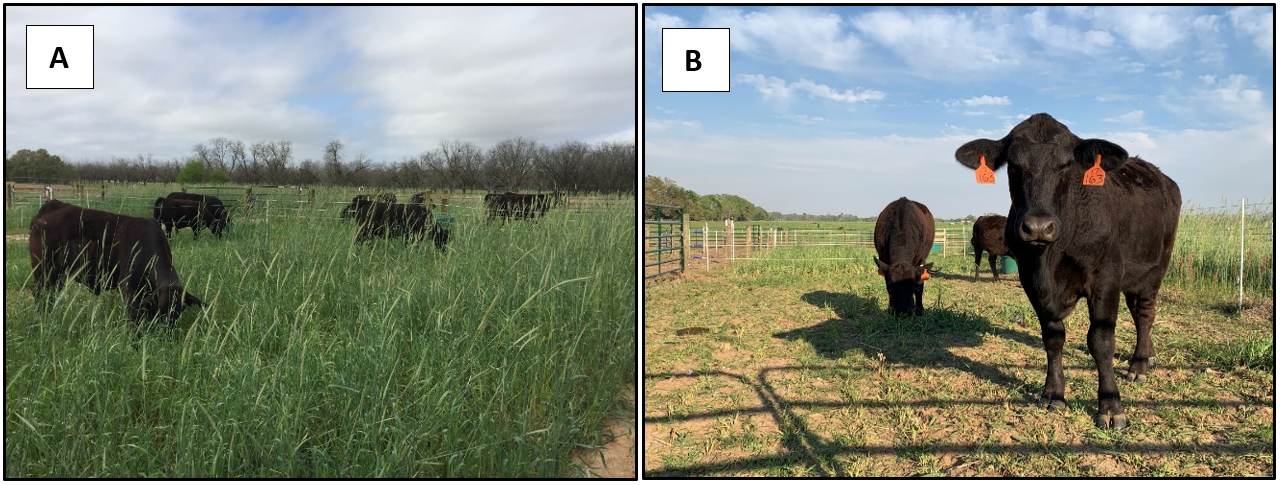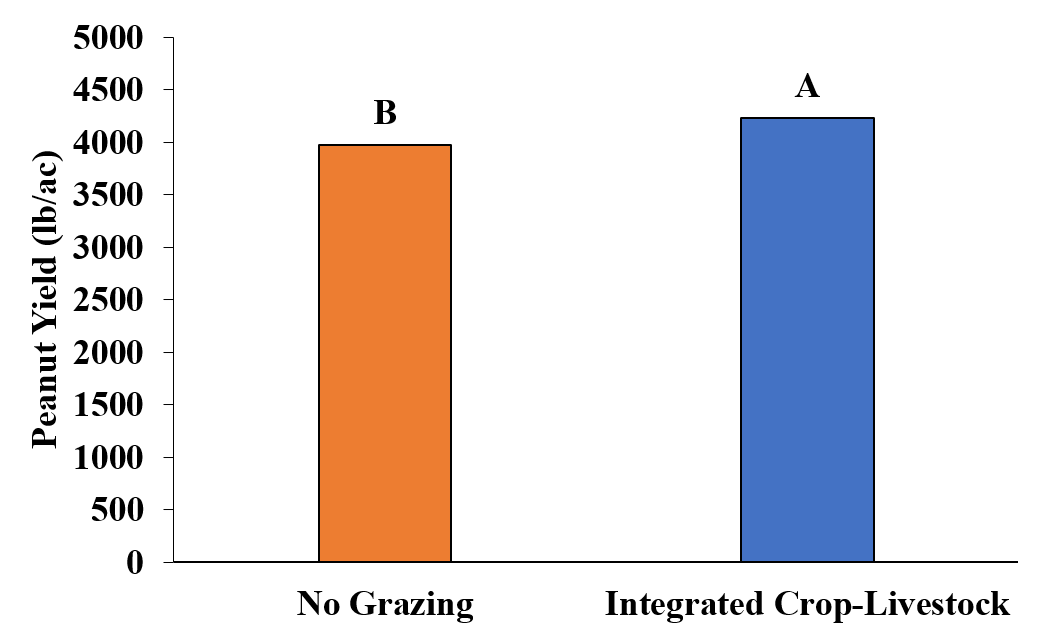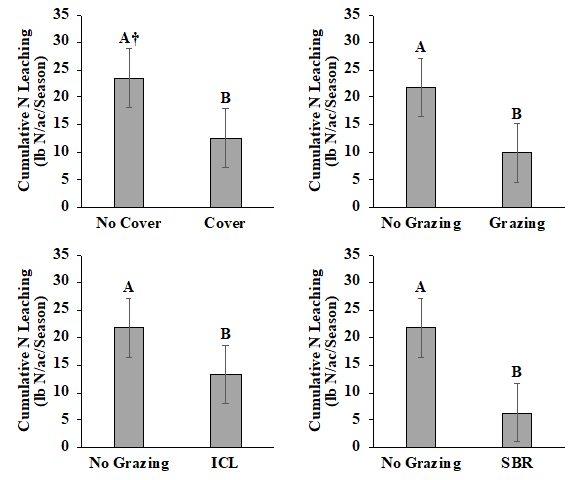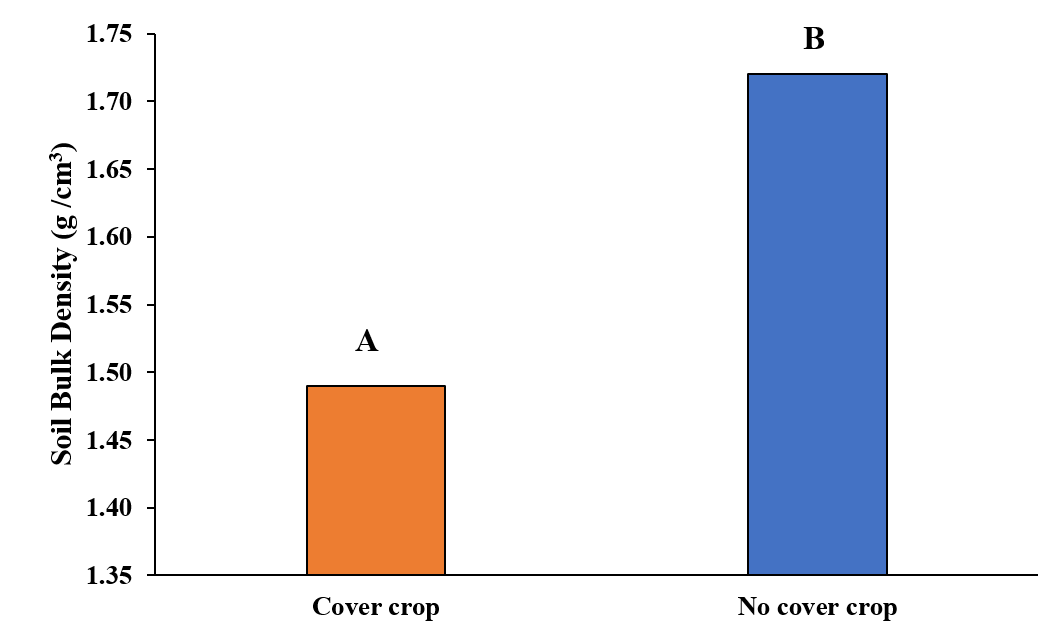Jose Dubeux, Erick Santos, Luana D. Queiroz, Igor L. Bretas, UF/IFAS NFREC Marianna
A common practice used in Florida is planting cool-season grasses during the off-season of summer annual crops (e.g., cotton and peanut) to protect soil from erosion. Many of the winter cover crops have forage potential and can be used as a feeding source for animals when perennial pastures are dormant. Grazing these forages can add value to the production system by improving land utilization and increasing overall system resilience to market fluctuations and severe weather phenomenon. Furthermore, cool-season forages usually have superior forage quality than warm-season grasses, resulting in superior liveweight gains. Therefore, the use of cool-season cover crops for grazing livestock is an opportunity for developing heifers and stocker systems in the Florida Panhandle.
=
Grazing Management of Cover Crops
Grazing management is an important component of pasture management. Frequent and severe defoliations will reduce above and below-ground plant biomass, while also having negative implications on animal performance. In Integrated Crop-Livestock (ICL) systems, residual biomass from a cover crop might also affect the productivity of the following row crop. Managing the grazing on cover crops to achieve a residual stubble will be beneficial for the overall system performance. Both undergrazing and overgrazing will have negative effects in ICL systems (Figure 1). Undergrazing will lead to a mature forage and might increase the residual biomass with reduced nutrient cycling from grazing livestock. This might affect the following row crop response. On the other side of the spectrum, overgrazing is even worse. It will increase bare soil and reduce the above and below-ground biomass, negatively affecting the functions of cover crops. Therefore, finding a balance is critical! At the UF/IFAS North Florida Research and Education Center (NFREC), near Marianna, researchers tested how different stubble biomass (450, 1340, and 2230 lb. DM/acre) affected different aspects of soil and crop response. Overgrazing increased weed presence and reduced above and below-ground biomass of cover crops, reducing litter nitrogen (N) return.

Figure 1. Grazing cover crops at UF/IFAS NFREC Marianna. A. undergrazing condition (2230 lb. DM/acre); B. overgrazing condition (450 lb. DM/acre). Photo credit: Erick Santos.
=
Planting cover crops reduced soil bulk density (Figure 2). A common belief among producers is that grazing might compact the soil. Our results indicated that when cover crops were well managed, soil bulk density was similar between grazed vs. ungrazed sites.
=
Peanut Yield
The ensuing row crops also benefit from integrated systems. Peanut yield, for example, was greater in ICL plots compared with ungrazed plots (Figure 3). This highlights the importance of integrating crops and livestock as a win-win strategy. Other benefits include reduction of nitrate leaching, establishment of cover crops, greater soil cover, and reduced weed encroachment.

Figure 3. Contrast effect of No Grazing vs. Integrated Crop-Livestock on peanut yield (P < 0.10). Means followed by a different letter statistically different. No Grazing = No Cover, Cover + 30 lb. N/acre, Cover + 80 lb. N/acre; Integrated Crop-Livestock = ICL-Over grazing, ICL-Moderate grazing, ICL-Under grazing.
=
Potential Nitrate Leaching Mitigation
A recent 3-year field study at UF/IFAS NFREC addressed a range of treatments including fallow, cover crop without grazing, and grazing cover crops at different intensities in an ICL or in a sod-based rotation system (SBR; similar to ICL system with a sod component during the warm season). Results demonstrated that the use of ICL systems reduced nitrate leaching in North Florida (Figure 4). Grazed plots also resulted in lower nitrate leaching compared to ungrazed plots. It is important to highlight that cotton yield was not affected by grazing in this case, however an increase in peanut yield was observed (Figure 3 above).

Figure 4. Contrasting effect on cumulative total N leaching of different cropping systems. Average of three years and two seasons. Contrasts were declared different at the 10% probability level according to the F-test. Only significant contrasts are shown in the Figure. Means followed by a different letter within contrast are statistically. Bars refer to the SE. No Cover vs. Cover (P = 0.10); No Grazing vs. Grazing (P = 0.01); SBR vs. ICL (P = 0.19); No Grazing vs. ICL (P = 0.10); No Grazing vs. SBR (P = 0.01).
=
Take Home Message
Integrating crop and livestock (ICL) systems is a win-win strategy and it presents a great opportunity in Florida. There are challenges to overcome during this process but promoting the partnership between row crop and livestock producers seems to be the best strategy. Grazing management is key to promote the full benefits of cover crops. Grazing animals recycle nutrients back to the crop field benefiting ensuing row crop productivity and reducing the use of fertilizers. Livestock systems might also benefit because of higher forage quality and potential to achieve greater gains when grazing cool-season cover crops. Finally, the environment also wins, because of reduced nitrate leaching, reduced soil erosion, and reduced weed encroachment.
- 2025 UF/IFAS Forage Legume Conference – May 1 - March 28, 2025
- How are My Cool-season Forages Recovering from the Snowfall and Low Temperatures? - January 31, 2025
- Integrated Crop-Livestock Systems Improve Soil Health - July 26, 2024

